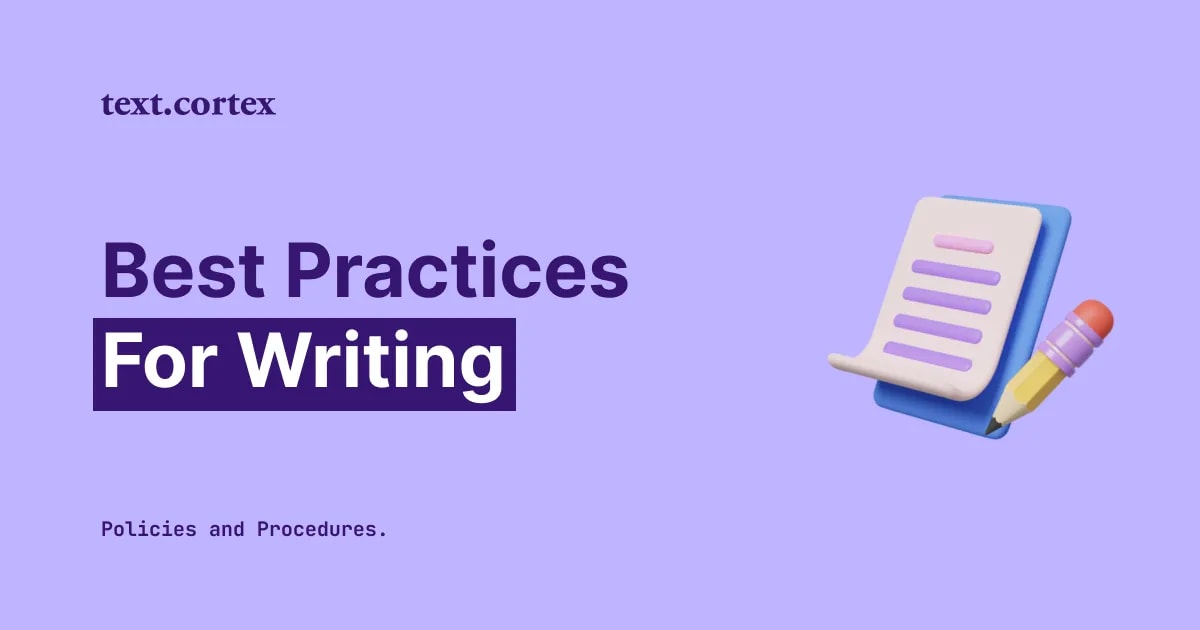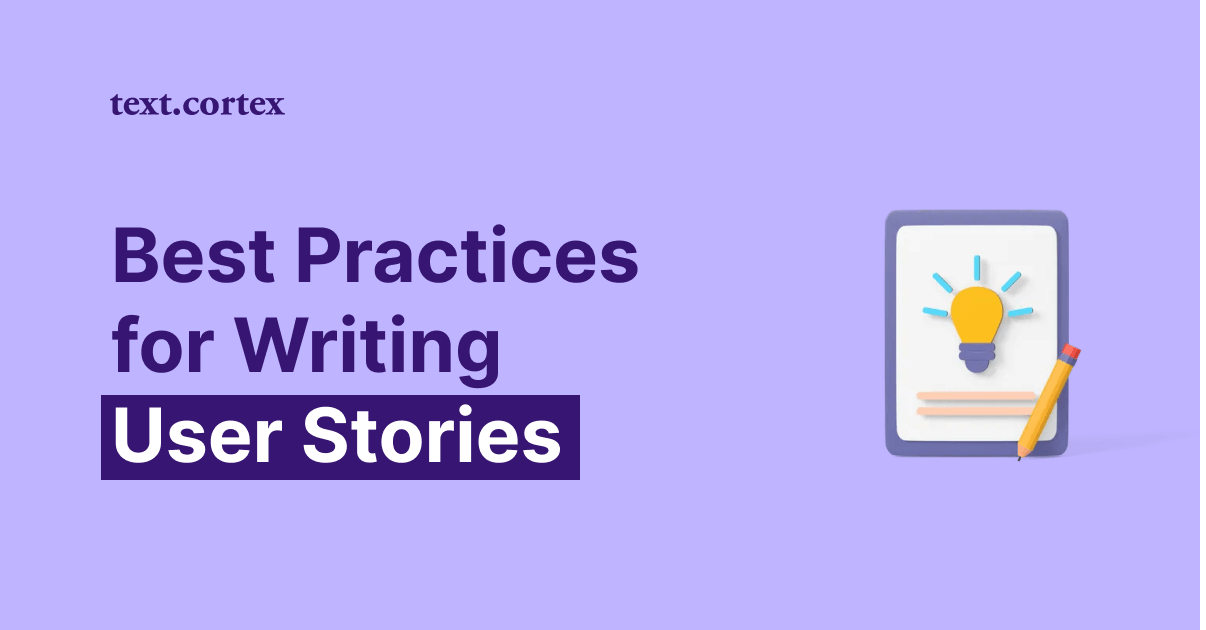Did you know that more than 55% of visitors stay less than 15 seconds actively on the page?
So after this sentence, there are big chances that only 45% of you stayed and read this article right now.
Even though many people think it’s easy to write high-quality articles, you know how it can be when inspiration leaves you, and the deadline is waiting on the next corner.
Yeah, it can bring you true headaches.

The crucial part of being a great blog writer is a personal drive to create a masterpiece, regardless of your writing project. Therefore, there is no irrelevant content for a good writer.
Not only do blog posts need to satisfy specific criteria in the sense of providing value, but they also need to hit the market straight to the center.
Moreover, this requires extensive research, yet you want to produce content at scale.
Do you have a feeling that your creativity has a timer? If you could only write your content a bit faster?
If you relate to this, guess what? Yes, you can write a lot faster, and with the same quality of content.
In this article, you will find an ultimate guide on how to write a blog post faster than you did without losing the quality of your content.
Let’s get straight to it!
1. Do a research
Doing research is mandatory to accomplish a high standard of blog posts or other types of content. It can be entertaining and knowledgeable, but as mentioned earlier, it is time-consuming.
To do your research properly, what you have to do is:
- figure out what would be the best topic for your targeted audience
- keep in mind the reader's point of view
- read different studies on the subject as much as possible
All three require independent research.
One of the most common reasons content writers cannot write blog posts fast is because they combine writing and research. Therefore, it would be best if you consider separating these two actions.
Why?
- Your brain will absorb the information by just focusing on reading the materials you want to write about. Take your notes, label the most important parts as your inspiration or guidance, and after you finish, close your browsers.
- Focus just on writing. This will boost your creativity and help your brain pop ideas like popcorn. When you have your base filled out with enough information, it is easy to let imagination create your words. Believe it or not, this is how you create an ideal environment for your inspiration to come out.
If you put this into practice, you might be surprised with how little effort your blog post reaches the finishing line.
2. Create an outline
Imagine your blog post as a reader's journey. You are probably familiar with the quote, "Life is a journey, not a destination."
The entire concept of your blog post should focus on those principal points along the way. The blog title is your starting point, and your conclusion is a final destination—everything in between matters the most.
Think of your outline as a thesis that you represent. Then, like with any other personal opinion, the reader's reaction is the key. They should either oppose or agree with your thesis. Both reactions are good because they keep them interested in staying more on your page.
How to do that?
- Create your main idea
- Organize your thoughts and findings around that idea with logical consistency
- Choose your best intro to attract the reader's eye
- Separate your main idea into the most important takeaways of your story
- Sometimes is a good idea to support those takeaways with sub-sections (this is not mandatory, let it happen naturally)
- Make a point. Write your conclusion and justify your main idea.
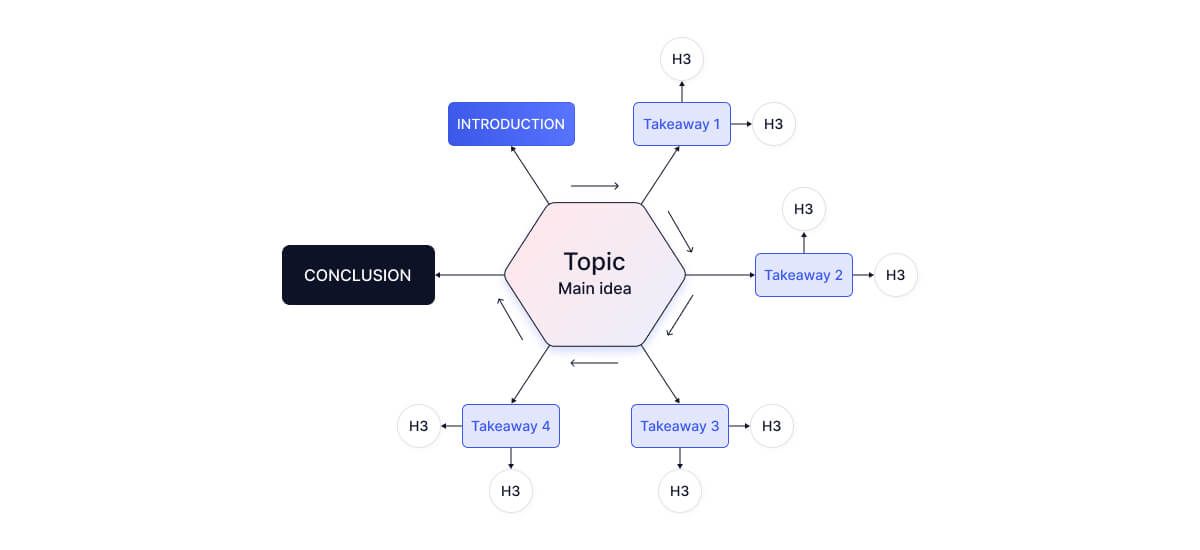
On the other hand, what's interesting is that nowadays, you don't have to break your brain and overthink outlines for your blogs. There are popular AI copywriting tools that do that for many writers.(Such as TextCortex)
3. Fill in the headings with valuable content
It is not enough to have competitive headings unless you support them with:
- Verified facts
- Referrals with Internal and external sources
- Opinions of the experts
- Personal arguments that support your heading statement
- A bottom line that will convince your reader to reconsider predictive objections
- Examples
As long as your content is unique, provides value to the reader and drives them to learn something new, everything is great.
Bullets are a great way to stand out sub-points of your headings and to make your listings more enjoyable to consume. They are usually thesis from your research that keep you on track.
If you have your sub-points coherently organized, you will not have to waste your time figuring them out in the writing process. This will save you a lot of time.
Consider them as muscles that hold the spine of the article, making it stronger and more convincing. The stronger your arguments are, the more hooked the reader will be.
This is where they start to believe you, change their opinion, encourage themselves to try something new, or even disagree entirely. Whatever the outcome is, what is important is that they are engaging.
4. Write a conclusion
The conclusion is the final destination of the reader's journey - the overall experience collected through the main stops of your blog post. This is a place where you are allowed to sum up all your thoughts and give a final blow to make a point.
This might sound a little odd, but many content writing experts suggest that you can speed up the writing process if you write the conclusion sooner than the blog post's body.
Why?
Well, it is like you are drawing a line between two dots.
Dot A is your blog title, and dot B is your conclusion. This engraved path will help you focus more on the flow of the body structure you need to create to get the desired result.
Also, knowing the end goal what you need to accomplish makes it much easier to keep your focus so you don’t steer away from the topic.
5. Create a compelling CTA
When writing a blog post, ask yourself who will read it, what's the article's goal, and what action it's supposed to trigger in the reader?
You have probably experienced numerous times that your copy didn't get you many conversions? You probably had an impression that you did a lot of work for nothing, right?
Try reviewing the level of engagement you provide in your articles—interaction with your readers matters.
Here are a few simple tips you can add to your content to get people engaged instantly:
- Inspire - Remind your readers of all the benefits they will get if they choose to act on your advice.
- Empathize - Reveal your readers that you know what their thoughts and doubts are.
- Ask questions - Engage your readers by giving them ideas they can think about.
- Encourage - Optimism is a solid weapon for erasing all fears and second thoughts.
- Provoke - sometimes reverse psychology can have a huge impact on readers’ engagement.
Try applying some of these tips to make your readers more engaged with your content and get them to take the desired action—test how it works for you.
6. Write an attractive intro
Writing a seductive and convincing opening line may be the most critical part of your blog post.
Have you ever heard about Hegelian Dialect?
This is one of the most popular writing styles that content writers use to catch readers' curiosity and make them continue reading their content.
Hegelian dialect is the philosopher George Hegel's type of dialect based on a thesis (point of view), antithesis (negative point of view), and synthesis (resolution in the form of modified point of view).
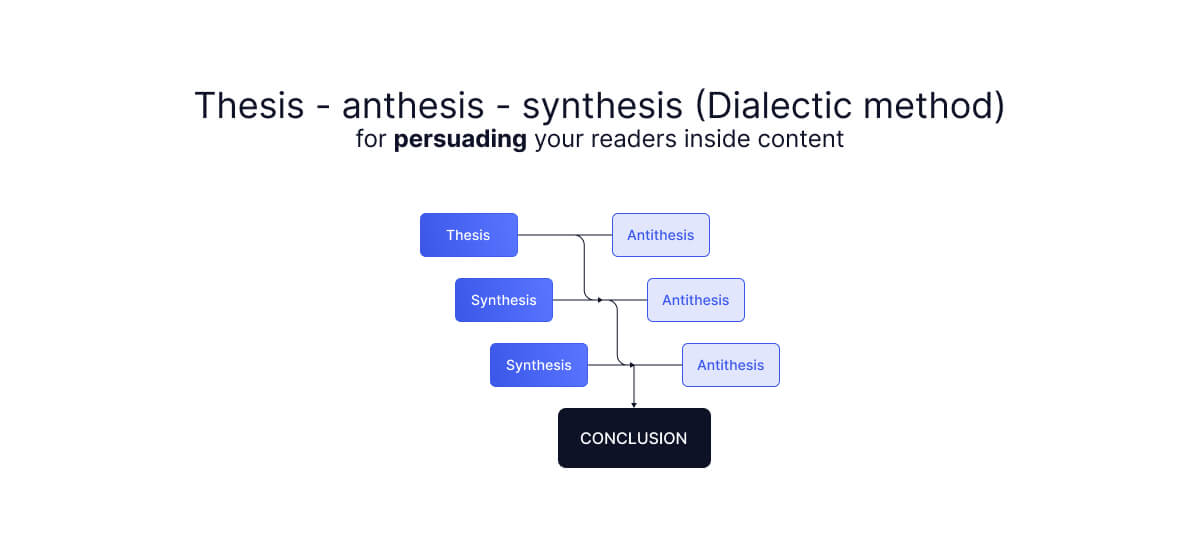
Here’s an example:
Person A (thesis): "Content marketing will bring us more customers"
Person B (antithesis): "Yeah, but I see many companies who don't have good results with content marketing"
Person A (synthesis): "That's true, but that means that many companies are doing it the wrong way. Instead of focusing on more traffic, we should focus on getting less but more qualified visitors who will buy from us"
Do you see how by making and solving arguments, Person B gets persuaded?
That’s exactly how you can apply this framework to your intros and make your readers amused.
7. Create a killer headline that hooks the reader
Headings are your key points that will make the reader read the whole article. They need to be promising, intriguing, concise, solid, and transparent.
The reader must understand the logic of the writer's path, like milestones that need to be conquered.
When you write an article headline, be sure it grabs the reader's attention.
This is not just about making your article attractive or exciting, but also about capturing the readers' attention and keeping them there long enough to read the rest of the article.
So, here’s how to create that killer headline:
1. Hook - short but effective.
A good hook needs to intrigue your readers to check the article and see what it is about. It can inspire them and make them want to continue reading, even when they have lost interest or don't really care for what the article is all about.
2. Specific - Create your headline to be different.
A headline is the first thing most people skim through — so adding some extra specific words makes it more attractive for the readers. You want to clarify what the article is about but still leave room for interpretation.
For better understanding, take a look at the example of eyecatching vs. lousy headlines.
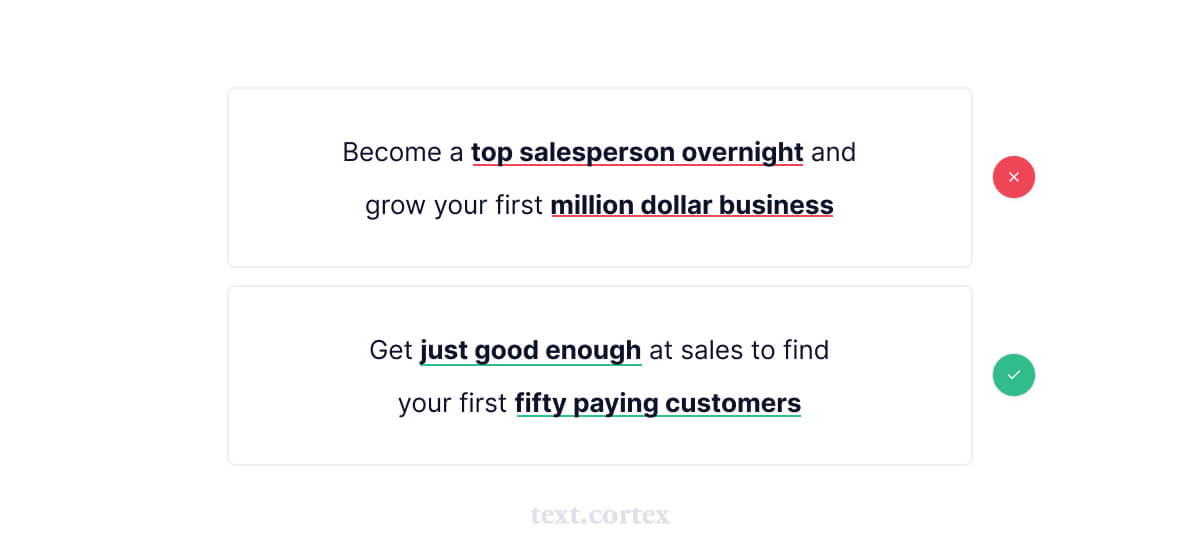
3. Actionable - provoke an emotional response and reaction.
You don't want to use the same title for many different articles. You want your readers to think, "I like that, let's go deeper into this" or "what comes next." Provoking emotional reactions like curiosity encourages readers to keep coming back or reading more.
Let's follow the example below with TextCortex, and see how "killing" headlines can be made with a single click using an AI writing tool:
8. Add images, graphs, statistics
Reading black text on white paper can be extremely exhausting and tedious. Therefore, visualization has a vital role in the quality of your content.
Many studies have shown that people rather scan the content than reading word for word.
In one of their research articles, Nielsen Norman Group, known as NNg, discovered scanning patterns of how people read on the Web.
Those scanning patterns are divided into four groups:
- F pattern - in the absence of subheadings and bullets, readers focus more on reading words on the left and towards the top of the page, forming a scanning pattern in the form of capital letter F.
- Spotted pattern - scanning pattern where reader focuses on word that visually stands out from the other text or a word that resembles the one reader is looking for.
- Layer-cake pattern - involves scanning through the page (mostly heading and subheading) until the reader locates the heading he is interested in. This is proven to be one of the most effective scanning patterns.
- Commitment pattern - is a scanning pattern when the reader is reading all or most of the content. This pattern is only present with readers interested or very motivated for their reading content.
This research proves that highlighting parts of the blog post will satisfy readers in all scanning pattern types.
By adding images, graphs and statistics, readers can have a better overview of the facts, and they should serve as a confirmation of the expertise you write about.
Also, by supporting some facts, or the knowledge you’re presenting with the images, graphs, or something else, you help readers to memorize the information more effectively.
Luckily, today we have many tools to help you "decorate" your blog posts and improve your articles.
9. Proofread & Polish
When you finish writing your blog post, you are one step closer to wrapping it up and publishing it.
Proofreading and polishing is the step that keeps your credibility in line.
However, this is the point where many writing errors can stay overlooked. Always remember to review your work and fix mistakes that can creep up.
Also, try looking at your article from the critique aspect. Find what can be improved, simplified to consume, provided with more details, and do it to improve your article.
That little extra effort will make your blog post better than the other closely-related blog posts.
Bonus tip - Pomodoro Technique
Are you familiar with Pomodoro Technique?
It is a technique that helps you divide your writing into segments, successfully avoiding writer’s block and inspiration blackout.
Separate your writing into smaller sections, and give yourself a time limit to write it for an hour. Then make a 10 minutes break, and do something else to help you relax.
For example, drink your coffee, go out for a walk, watch TV. Repeat the entire process until you finish with your last section.
Practicing Pomodoro Technique will keep your creativity going and it will help you improve your writing efficiency.
How AI Copywriting tools help you write blog posts faster
There are many benefits to using AI tools to write blog posts. AI-driven article writing software can create blog articles in less time than it would take a writer to do the same task manually.
AI tools can help you overcome limits in your skills, eliminate all those repetitive, tiring, and time-consuming parts of your work, and help you focus better on the quality of your blog posts and research.
The main idea about using AI tools to write your blogs is to take away part of your writing activities. Not all of them. This will save plenty of your time, and you will not even notice it.
Why?
Because you cannot even imagine how many seconds, minutes, and hours you lose going back and forth editing the text. AI tools jump in these activities like life saviors.
You do not have to think about mistyping, grammatical errors, text tone, and form. You just need to figure out what you want to write about and leave the rest up to the AI tool to help you find.
With TextCortex, you can generate multiple different content writing forms in a day without too much effort.
New use-case and purpose-driven AI tool models, such as TextCortex, can also create indistinguishable from human-written content.
Unlike other GPT-3 module-based AI tools, we at TextCortex teach our AI writers to predict the next fitting word in the sentence.
We are doing that based on 3 billion studied sentences, and our library is growing every day.
To create a blog post within only a few seconds, enter any platform by your wish and drop a 5-word idea for the topic you want to create content for.
Then highlight it, and hit the “Long-for post” button.
Choose the output that fits you best, and you’re ready to go.
Not bad, huh? How much time would you need to write this? TextCortex needed just a few seconds. 😛
The best part is that you do not have to spend a single dime understanding how it feels when you create effortlessly.
Ready to expand your content production?
Download the TextCortex Chrome extension for free and start creating your blog posts at scale today.

![How To Write Blog Post 7x Faster Starting From Today [Definitive Guide]](https://textcortex.com/cdn-cgi/image/format=avif,quality=90/https://assets-global.website-files.com/622611a2b23d0e6b270fba81/6239302f28b4e02c65342277_how-to-write-blog-post-faster-with-ai.jpg)

